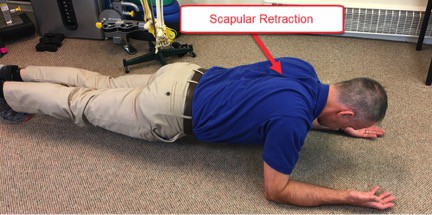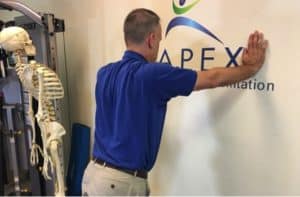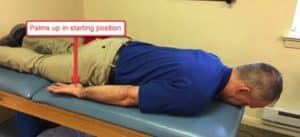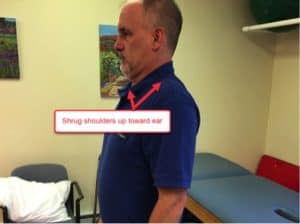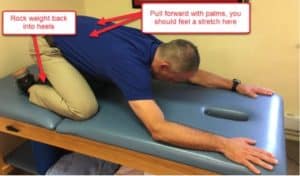Stop Doing Rotator Cuff Exercises!
Many athletes and non- athletes suffer from rotator cuff tendinitis or rotator cuff tears. Many times, a solution doesn’t lie in strengthening the existing rotator cuff, but rather the scapular stabilizers.
Scapular stabilizers provide support for the rotator cuff to function. They are the foundation of the rotator cuff and can wreak havoc on shoulder function if they are not adequately strong. This is similar to trying to stand up in a rowboat and the lack of stability you feel when trying to move in the boat. Without that solid base, the rotator cuff is at a disadvantage; it has to work harder to perform the same task without adequate support from the scapula stabilizers.
Let’s quickly go through the anatomy of the rotator cuff and scapula stabilizer muscle groups …
The rotator cuff is a series of four muscles that function to stabilize the humeral head in the glenoid fossa and is one of the major joints of the shoulder complex. The muscles that make the rotator cuff are comprised of the supraspinatus, infraspinatus, teres minor and subscapularis. They originate on the bone called the scapula or “shoulder blade” and attach to the head of the humerus forming a “cuff” like appearance. Most of the injuries that we hear about (tendinitis, tendinosis and rotator cuff tears) are located in the suprapinatus tendon. The dynamic stability of the shoulder is achieved with the rotator cuff and scapular stabilizer muscles working together.
Many of my patients who refer to Google or YouTube videos for information on how to treat the anterior instable, labral tears, rotator cuff tears and rotator cuff tendinitis may not get results if they don’t address the foundation scapular stabilizer muscle groups. In fact, many problems in the neck and shoulder region can be linked to poor scapular stabilizer strength and/or lack of mobility in the thoracic spine.
Check out this diagram and list the rotator cuff muscles and scapula stabilizers:
The following exercises address the primary muscles that stabilize the connections from the scapula to the trunk:
Serratus Anterior — Rhomboids Major and Minor — Trapezii — Levator scapula
Serratus Anterior
The serratus anterior is the muscle that pulls the scapula forward and around the rib cage. It’s often called the “boxer’s muscle” which can help clarify its function. It helps to think about reaching for an object without bending towards it. Those muscles that allow you to push your shoulder forward and extend your reach … that’s the serratus anterior, and here’s one exercise to strengthen it:
Serratus Pushups
• Start by getting into pushup position (resting on elbows is okay, too).
• Slowly retract scapula – you should feel your torso “sinking” as you move toward the ground with your arms remaining straight. Hold for 3 seconds
• Slowly protract scapula – you should feel your torso raising away from ground. Hold for 3 seconds
• Repeat 10 times
Modifications
*If you have difficulty maintaining pushup position, this exercise can be completed in quadruped or by standing against a wall.
Rhomboids Major and Minor
Whereas serratus anterior protracts the scapula, the rhomboids do the opposite, and retract the scapula. They also assist with downward rotation. Here’s a simple exercise to work your rhomboids:
Chest Elevation with Arm Extension
• Start by lying face down on mat.
• With arms at side, raise out to the sides and lift chest off mat.
• Exhale and hold position for 2-3 seconds.
• Repeat 10 times.
Trapezius
The trapezius is a multi-head muscle with a variety of functions. It is primarily responsible for a variety of scapular motions – including depression, elevation, and retraction.
Upper Trapezius – Bilateral Shoulder Shrugs
• Stand (or sit) with good posture
• Raise both shoulders as high as you can
• Hold position for 3-5 seconds
• Repeat 15 times
Middle Trapezius – Bent Over Rows
• Start by lying face down on mat, or if able, in bent over row position
• With palms facing down, raise both arms out to the side and squeeze
• Hold position for 2-3 seconds
• Repeat 15 times
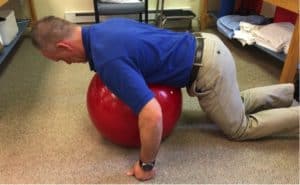
Lower Trapezius – Child’s Pose Squeeze
• On mat, position self on knees bent over with arms on mat in front (similar to child’s pose in yoga)
• Rock back on your heels, use hands to pull yourself forward and squeeze
• Hold 2-3 seconds
• Repeat 15 times
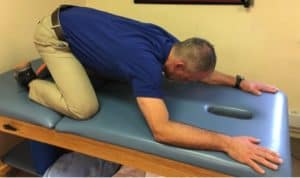
Levator Scapulae
The levator scapulae also assists with scapular elevation and also helps stabilize the cervical spine.
Unilateral Shrugs
• Standing or seated with good posture, raise either shoulder and attempt to touch ear.
• Squeeze at top, hold for 2-3 seconds.
• Repeat 15 times on each side.
CLICK HERE to view a video on this topic on our YouTube Channel! Don’t forget to “SUBSCRIBE” while you’re there!




